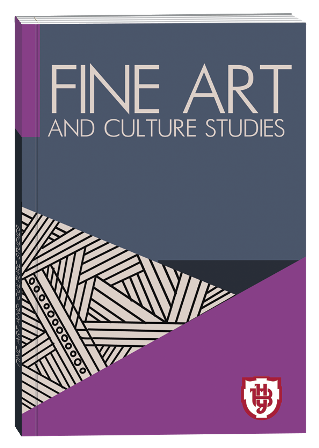THE CONCEPTUAL AND STYLIST BASIS OF THE TRADITIONS OF EASELE PAINTING IN CHINA IN THE SECOND HALF OF THE 20TH CENTURY – XXI CENTURY
DOI:
https://doi.org/10.32782/facs-2023-6-9Keywords:
China, easel painting, socialist realism, stylistic traditions, stylistics, traditionsAbstract
The article presents an analysis and investigates the peculiarities of the functioning of Chinese easel painting under the influence of Western European trends on the example of the second half of the 20th century – the 21st century. Many questions related to the research of the essence of the formation of easel painting in China attracted the attention of numerous domestic and foreign scientists, but the analysis of their scientific works and other leading specialists allows us to conclude that many questions still need doctrinal elaboration. As a result, the purpose of the article is a comprehensive and doctrinal analysis of the conceptual and stylistic foundations of the functioning of Chinese easel painting under the influence of Western European trends, using the example of the second half of the 20th century – the 21st century. Research methodology. The methodological basis of the article is a pluralistic and complimentary combination of modern general philosophical and philosophical and legal approaches, general scientific and special scientific methods, techniques, and principles of scientific knowledge, due to the uniqueness of the subject of research, necessary to ensure its objective study. In the most general worldview, the functioning of Chinese easel painting under the influence of Western European trends is based on a dialectical approach. The scientific novelty of the article lies in the fact that for the first time an attempt has been made to comprehensively characterize and define the essential features of the functioning of Chinese easel painting under the influence of Western European trends on the example of the second half of the 20th century – the 21st century. The relationship between Chinese traditional painting and European traditions, which became objective determinants of changes in the specificity and essence of painting within the studied chronological framework, was studied. It is concluded that in modern Chinese culture, the traditional principles of painting retain their relevance, serving as an object of investment, a source of inspiration for artistic creativity, a national brand in cultural industries, a heuristic element of synthetic arts, in particular, those based on modern computer technologies. Modern Chinese artists synthesize the traditions of Western and Chinese painting to enrich their author's style, but the traditional style remains beloved as an expression of ethnic originality, classical aesthetics, and the richness of ancient Chinese culture.
References
Лу Хун. Розуміння «сучасного мистецтва». Мережа критиків образотворчого мистецтва КНР. URL: http://www.msppj.com. (дата звернення 16.11.2023).
Ковальова М., Фань Л.. Олійний пейзажний живопис у Китаї ХХ ст. (традиційні та інноваційні особливості). Актуальні питання гуманітарних наук. 2020. Вип. 33. Т. 1. С. 68–75.
劉淳著. 中國油畫史 增訂本. 北京 版社. 北京, 2018. 530 с.
Москалюк В. Із проблем сучасного монументального мистецтва. ВІСНИК ЛАМ. Вип. 10. Львів : ЛНАМ, 1999. С. 197–200.
Ван Юйген. Відродження прикладного мистецтва Китаю. Мистецтво. 2007. № 4. С. 8–12.
Максимів К. М. Виступ на засіданні спілки художників. Мистецтво. 1955. № 7. С. 46–48.
陳丹青. 陳丹青1968年至1999年間的繪畫作品。北京. 民間藝術, 2002. С. 20-26.
Фуко М. Археологія знання. Київ : Ніка-Центр, 1996. 176 с.
劉鵬. 世紀中國美術史. 北京:藝術. 北京大學出版社,2007. 320 c.
Юйген Ван. Відродження прикладного мистецтва Китаю. Мистецтво. 2007. № 4. С. 8–12.







